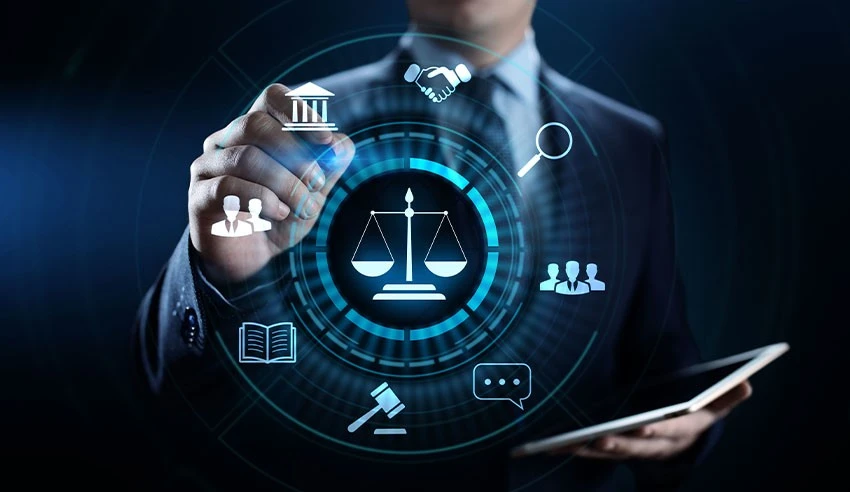Written for the ABA Center for Innovation End of Year Report
By Joseph Raczynski
In the ever-evolving landscape of LegalTech, the past year has seen advancements that are reshaping how law firms both practice and operate. For small and medium-sized law firms, staying ahead of these trends is crucial not only for maintaining competitiveness, but also for improving efficiency, client service, and overall firm profitability. While much of the buzz has centered around AI-driven innovations, there have been numerous other impactful technologies that deserve attention. I will delve into these non-AI advancements, likely a refreshing reprieve, offering insights into the current state and future trajectory of LegalTech.
Better Organization of Data
Effective data organization is foundational to leveraging any advanced technology. The future of legal technology is data-driven, however the vast majority of law firm data is still unstructured. While advancements in the latest technologies might seem as if they will solve for this, in the next several years firms will need to invest in robust document management systems (DMS) and refine data repositories. These are essential steps in futureproofing, ensuring all applications both current and in the years to come can leverage internal data. The newly ordered data can facilitate new applications and workflows, leveraging accurate, up-to-date, and relevant information. By aligning the DMS with evolving technological needs, firms can unlock new possibilities for innovation and efficiency in their operations.
Client-Facing Practice Innovation
Years ago, I met with a few firms, their clients, and technology providers to establish innovative processes and workflows to enhance the entire ecosystem. These are collaborative lab sessions bringing all parties to the table to enhance or improve the technology and services for all parties. Each group gets a win. Recently I have seen an uptick in the number of firms extending this invite to the client and their technology provider to provide better services. While there is an initial investment in time and resources, the long-term relationships and efficiency gain can be impressive. This proactive approach helps build trust and transparency, ensuring clients are well-informed about the technologies influencing their legal services.
Increasing Use of LegalTech Apps
The trend of integrating multiple LegalTech apps for process management has set a precedent in the legal field. Clients increasingly rely on various LegalTech apps to manage their legal needs, much like they do with FinTech or personal management tools. This shift is shaping expectations around legal service delivery, with consumers demanding more seamless and integrated digital solutions. The average LegalTech user now interacts with multiple applications, and this number is expected to rise, reflecting a growing trend towards digital convenience and efficiency in legal services.
No-Code and Low-Code Process Automation
Process automation is transforming the business and practice of law. These tools are making tasks like data privacy compliance, document generation, and contract review faster and less prone to error. No-code/low-code platforms empower legal professionals to develop and manage their tech solutions without extensive coding knowledge. These platforms facilitate the automation of repetitive tasks, creation of templates, and management of workflows, increasing efficiency and reducing reliance on IT departments. This year automation is expected to penetrate deeper into core legal activities, further optimizing workflows and increasing efficiency. This shift allows legal professionals to focus on more strategic tasks, improving overall productivity and service quality.
Data Analytics for Strategic Decision-Making
Legal data analytics is poised to become even more of a focal point this year. With firms increasingly using big data to inform strategic decisions, analyzing patterns in case outcomes, client interactions, and operational efficiency, law firms can gain critical insights that drive optimization. The adoption of sophisticated data analytics tools specifically designed for the legal sector will continue to enhance firms’ ability to make data-driven decisions, leading to improved practices and better client outcomes.
Modernized Communication Methods
There are almost too many ways to communicate these days. There has been an uptick in firms choosing to go all in on particular platforms which allow for short form responses (text), longer communications (email), voice over IP (phone), video conferencing, and even more social engagement among teams, (Slack or Microsoft Teams). Updating communication systems is essential to support remote and hybrid workforces as well as maintain immediate contact with clients. Law firms are integrating office phone systems with digital platforms to ensure consistent and effective communication regardless of location. This modernization helps maintain seamless collaboration and client communication, crucial in a world where remote work is becoming the norm.
Digital Interfaces for Courts
We are finally seeing headway connecting various courts to more integrated systems for better automation. The pandemic has accelerated the adoption of digital interfaces by courts and government agencies. These digital solutions facilitate smoother interactions between legal professionals and the judicial system, making processes like court proceedings and filings more efficient. The integration of digital interfaces is a significant step towards modernizing the legal system and improving access to justice.
DIY Support for Access to Justice
Speaking of the courts, there is a growing investment in justice tech ventures, specifically those using technology to address large-scale legal system issues. Innovations are emerging to help self-representing parties understand the justice system without legal training. Startups like Courtroom5 – “Be Your Own Lawyer” are pioneering this effort, providing comprehensible guidance for individuals navigating the legal system alone. Legal aid providers are also expected to use technology more effectively to increase efficiency and make better case selections, thereby improving access to justice for underserved populations.
Consolidation of Legal Technology Vendors
Philosophically this could be viewed as a challenge or a benefit to the industry. Law firms are moving towards consolidating their technology vendors, preferring integrated tools that streamline processes and workflows. Firms are expected to migrate to industry-standard technology solutions that offer legal-specific integrations. This consolidation simplifies technology management and enhances operational efficiency by providing a unified platform for various legal tasks. The challenge here is that with too few vendors, competition lessens and price increases.
Increase in Cybersecurity Focus
As someone who has spoken about the importance of cybersecurity for the past fifteen years, there is a renewed push on the topic, and for good reason. The latest developments in machine learning create unique pressures on how a law firm can protect their networks, data, and IP. The attack vector has increased in scope with machines autonomously able to better penetrate in frightening new ways, which will only increase in the coming years. Thus, the importance of cybersecurity in the legal profession cannot be overstated. Implementing robust cybersecurity measures, such as data encryption, multi-factor authentication, and secure data storage, is crucial.
Conclusion
The advancements in LegalTech over the past year highlight the ongoing transformation within the legal industry. For small and medium-sized law firms, embracing these technologies is not just about keeping up with trends but about leveraging tools that enhance efficiency, improve client service, and ensure long-term competitiveness. As the legal landscape continues to evolve, staying informed and adaptable will be key to thriving in this dynamic environment. By investing in these non-AI advancements today, law firms can position themselves for a future where technology and legal practice are seamlessly integrated, delivering unparalleled value to clients and the broader justice system.
For more information, please visit the following:
Website: https://www.josephraczynski.com/
Blog: https://joetechnologist.com/
Podcast: https://techsnippetstoday.buzzsprout.com
LinkedIn: https://www.linkedin.com/in/joerazz/


Leave a Reply
You must be logged in to post a comment.